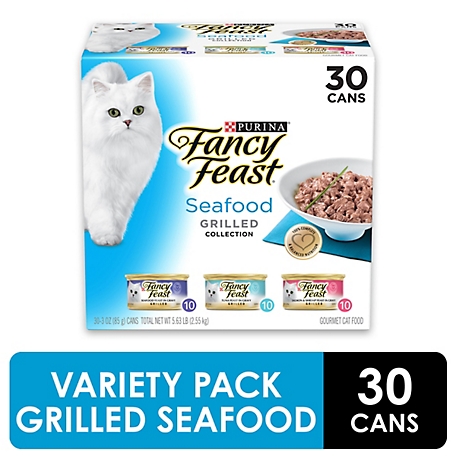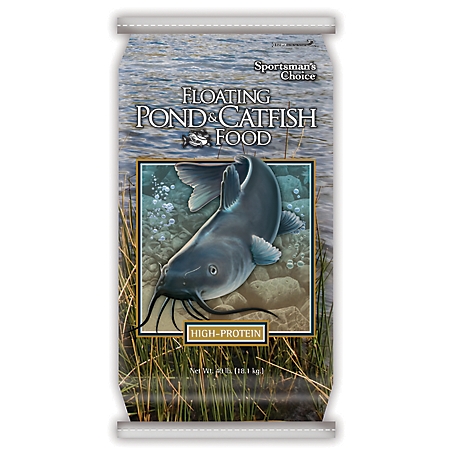Fancy Feast All Life Stages Grilled Seafood, Tuna, Salmon and Shrimp in Gravy Wet Cat Food Variety Pack, 3 oz. Can, Pack of 30
Demand the finer things in life for your pampered cat with Fancy Feast Grilled Seafood Gravy Collection Wet Cat Food Variety Pack. This cat food variety pack features the delicious seafood flavors kitty craves most. Appealing to your feline friend’s carnivorous side, this savory wet cat food contains quality, nutritious ingredients. Add Fancy Feast’s healthy wet cat food to your pet pantry today!
Demand the finer things in life for your pampered cat with Fancy Feast Grilled Seafood Gravy Collection Wet Cat Food Variety Pack. This cat food variety pack features the delicious seafood flavors kitty craves most. Appealing to your feline friend’s carnivorous side, this savory wet cat food contains quality, nutritious ingredients. Add Fancy Feast’s healthy wet cat food to your pet pantry today!
- Provides 100% complete and balanced nutrition in 3 delicious flavors: Grilled Tuna Feast in Gravy, tantalizing Grilled Salmon Feast in Gravy, and palate-teasing Grilled Seafood Feast in Gravy
- Wet cat food contains vitamins and minerals to help promote feline health
- Grilled and basted in savory gravy for a gourmet taste
- Cat food variety pack offers mealtime versatility
- Flaky, delicate texture of healthy wet cat food pleases the palate
- Seafood cat food appeals to cat’s carnivorous side
- Quality and safety tested
- Purina guarantees outstanding quality and taste; If for any reason you’re not satisfied, simply let Purina know why; Please contact Purina directly at (800) 778-7462 within 60 days of date on receipt for assistance
Additional information
| Country of Origin | Made in USA |
|---|---|
| Flavor | Tuna, Seafood, Salmon and Shrimp |
| Health Features | General Wellness |
| Life Stage | All Life Stages |
| Packaged Height | 7.75 in. |
| Packaged Length | 5.5 in. |
| Packaged Weight | 6.97 lb. |
| Packaged Width | 8 in. |
| Primary Flavor | Shrimp, Seafood, Tuna, Salmon |
| Texture | Gravy |
| Wet Food Package Weight | 3 oz |
| Wet Food Package Quantity | 30 |
| Manufacturer Part Number | 5000058664 |












by Michael
My cat loves this variety of food! I mix it with a little hot water to give him warm food with lots of gravy! He usually eats it all within a few hours! No wasting!
by Pelick
Despite this not being the top of the line healthiest wet food, our beloved cat will only eat this brand! He’s healthy – and happy.
by Raven
A Staple in our house.
by Capo
my cat is finicky. I am so glad that Tractor Supply had this, his fave meal combo.
by George
This is this only wet food that my cats will eat and the 30 pack makes it convenient to plan out my purchases of it for the month!